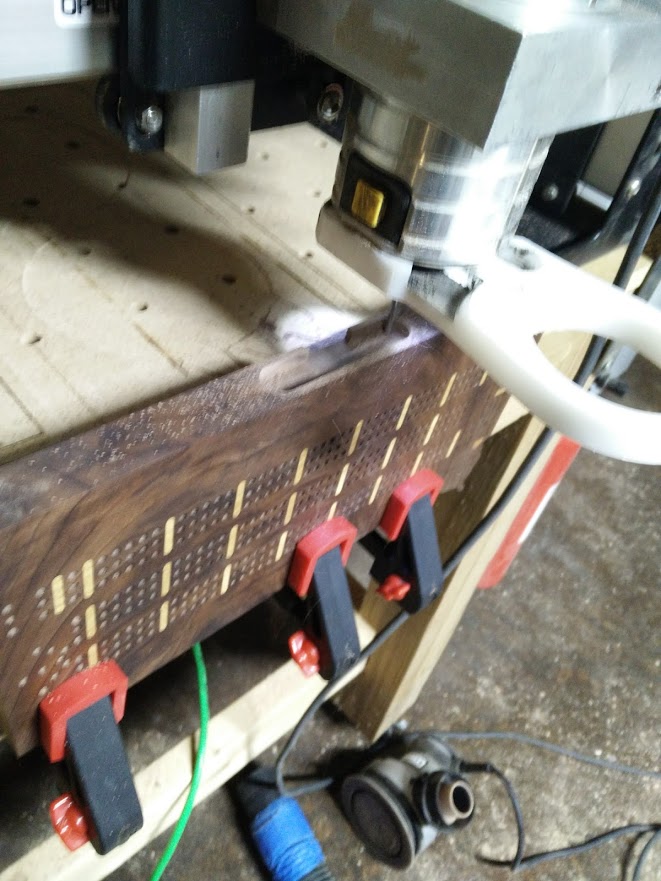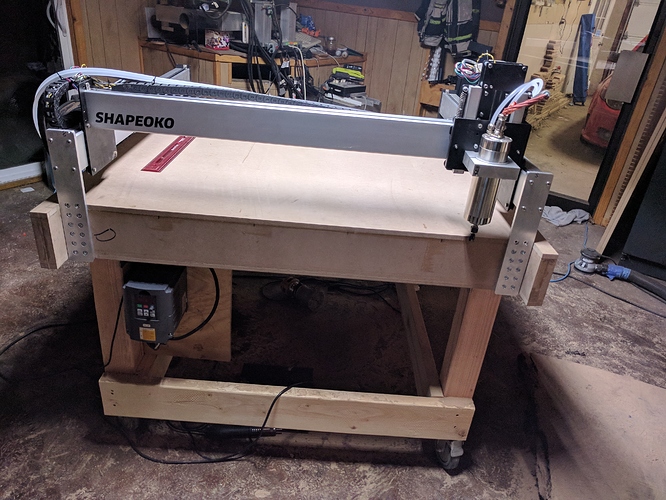So I finally finished putting my XXL together, then found my mistakes, fixed them, and got a successful World print. Impressed myself for only making one mistake - installed the Z plate upside down.
I had two errors in the machine itself - the limit switch wiring harnesses should have been marked X,Y,Z, but instead were X,Y and another Y. Easy enough to figure out, just traced back the harness, but made for a minute of head scratching. Also ran into an issue with the limit switch on the Y side hitting the drag chain and causing the chain to not sit square on the rail. The spacers were 1" long, so I cut 1/4" off them and that fixed the issue. Not complaining, but just noting it to the Carbide team for QC.
The one issue I do have is the cutting area. I understand the size of the area is approx. 33" x 33", but never really gave it much thought until I started drawing some reference marks on the waste board and wondered where I was missing about 2" of cutting space. I then realized that you would have to hang your work piece over the front frame in order to get the full 33" depth of cut. And no matter what you would either need to have a secondary waste board or some kind of spacer to raise your work to a point where your material can over hang the frame to get the full size cut area. So I went to the main Carbide site and found no information on this. I did find a reference about this on the forums, and then a little information on the wiki.
Now don’t get me wrong, I’m really enjoying the XXL, slowly learning how to use the programs, etc. But, IMO, I find it a little deceptive that in spending $1800 I don’t get all the information. No where on the building documentation, no where on the sales info, no where on the official Carbide site is this information given. And before some one jumps in and says “go to the wiki”, that is not an answer. You shouldn’t have to go to a secondary site, written by others, to get information on the limits of a machine before you make the purchase. Obviously, the machines have been sold like this for quite sometime, and maybe I’m just being a whining little girl about it, but I think there needs to be more information given on the Carbide site about what is needed to get the maximum from your new purchase.
So, for everyone that has made a secondary waste board, did you make it about 30.5" deep by about 32.5" wide so you could tram it completely? I’m assuming that this will work so I can level it all the way around.
Overall, I’m very impressed with the XXL so far. As a complete newbie to the world of CNC, it was easy to build and get the test runs up and going. Now to attempt all the projects the family is asking for.

